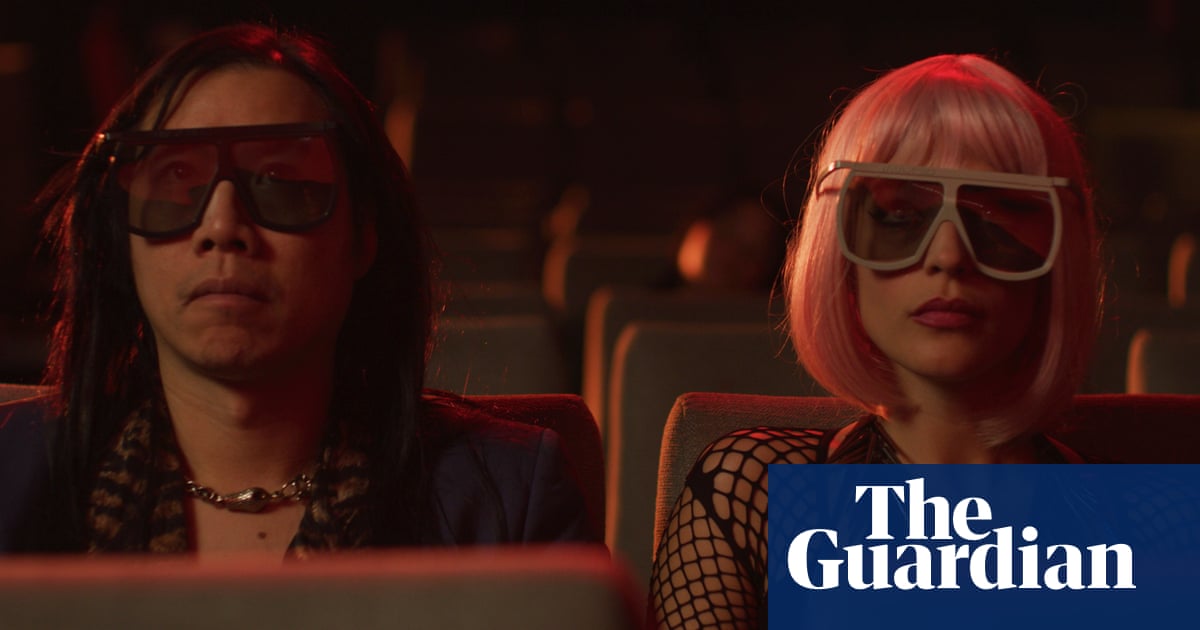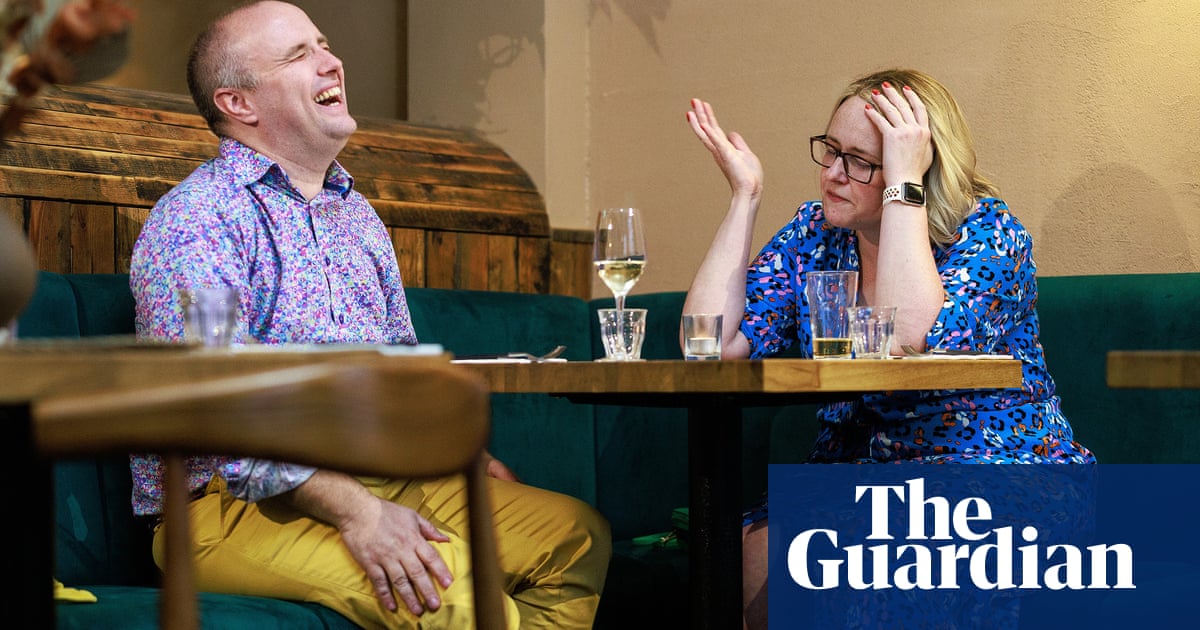
Only a genius of longform plotting could have planned the sting in the tail of the royal 2022. In the rolling melodrama of the British monarchy, the platinum jubilee was always slated for this year, gratitude splashed across the Daily Express. But now the mood will darken. So it is that 70 years of the Queen segues directly into 25 since the death of Diana, Princess of Wales. In Macbeth, the ghost haunted the feast. Here she returns with the pink gin hangovers barely faded. On with the show.
A film will mark the occasion: The Princess, a much buzzed-about new documentary. It also follows a celebration of the Queen, the fond bio-doc Elizabeth: A Portrait in Parts. That was the last movie directed by the late, highly regarded Roger Michell. But The Princess too arrives as a prestige project. The producer is Simon Chinn, whose CV includes award-winners Man on Wire and Searching for Sugar Man. The director is Ed Perkins, the fast-riser responsible for the Oscar-nominated Black Sheep.
If you made documentaries for a living, you would probably make a royal one. Think of the business case. Both Perkins and Michell go big on scenes of royal watchers: straining to touch a young prince, scowling when asked to make room for schoolchildren. Easy to mock. But to be born British is to be raised a royal watcher, either by choice or as a bored kid stuck in front of them. It makes the country a pre-sold audience. With Diana, moreover, the brand remains global.
And if you made documentaries, you probably would make The Princess. The operatic drama is a given. Just as important, it took place in front of a camera, or a bank of cameras, leaving an archive breadcrumb trail. Abundant source material for what is now the house style of modern documentary: talking heads sidelined for un-narrated collage. The Princess is a descendent of Asif Kapadia’s “fame trilogy”: Senna, Amy, Diego Maradona. Ill-starred icons of music and sport, Kapadia’s subjects came steeped in glamour, routinely filmed, seemingly cursed. Snap on all counts.
Perkins was 11 when Diana died. The memory stayed with him, he says, not least because his parents solemnly arrived together in his room to tell him, each more distressed than made rational sense. Such is a secret weapon of royalty: the tree rings of your life get tied up with their story. “I still vividly recall that night,” he says. “It was the same watching TV in the days afterwards. So many adults flocking to Buckingham Palace, publicly grieving as if they had lost a family member. At 11, I was just very, very confused.”
So a documentary-maker might also direct The Princess from a sincere desire to solve a childhood mystery. And that ready-made audience is part of it. The gargoyles of the tabloids were rightly blamed for blighting the sad, gilded life before the early death, but looks inward are rarer. “I wanted to use archive because that is the record of how we consumed her through the media. And that was my core question. What does this story say about us? About what we still consume and the demand we create?”
Chinn was much less keen than Perkins to make The Princess until the hounding of Meghan Markle. Then, he says, he saw history repeat. It wasn’t just the spite of the papers. Something else had resurfaced: a giddy public investment in misogyny and soap. “I’d thought Diana was overfamiliar. A bit of a dead end. Then I realised it was an origin story. Not just about Meghan but so much of modern Britain.”
Perkins captures Diana’s last night on 31 August 1997 not through stunned newsreaders but Australian tourists, chancing on police lights outside the Pont de l’Alma traffic tunnel while shooting Paris with a camcorder. It was the late 90s, after all. New digital cameras were flooding the market. A tech revolution was just beginning. Now it extends to high-end documentaries made up of nuggets of old telly and the device you may be reading this piece on. Chinn recalls that limbo period in late summer as a young producer of 28, beginning a TV career, boggling at news reports in the days after the death. “I honestly felt the nation had lost its mind,” he says. “There was this consensus that we were all devastated – for me and for my friends, it simply wasn’t true. So even then you think: ‘Ah.’ Two different Britains, right?”
The mutinous teeter to the national mood was being fuelled by flag-wavers outside Buckingham Palace. For republicans, it enshrined the irony of Diana: the queen-to-be who nearly put a bullet in the monarchy. The weirdness didn’t end there. In 1997 I was living around the corner from London’s first internet cafe and working near Victoria. My walk home that summer used to take me past the palace. Up close, it was became clearer every day that the madly swelling crowds were not simply milling and mourning. They came with cameras. They filmed and photographed themselves and each other. It was a riot of the performative, in a glut of emotion. Remind you of anything? “There is a definite argument her life and especially her death were omens of social media,” Perkins says.
Fiction has tried to tell this odd, contradictory story too. But scripts that try to get into the psyche of the princess don’t help. Nor the default mode of drama, making events bigger than reality. As big as last year’s catastrophic Netflix musical Diana, or Spencer, with Kristen Stewart lost in Kubrick delirium. And then there is The Crown, whose coming seasons will see the character played by Elizabeth Debicki, another LA film star, one more Diana for the hall of mirrors.
With a story this close to camp already, you have to strip back to something like the facts. And documentary itself has a role in the tale. Newsreels made for early 20th-century cinema crowds were embraced by prewar royalty: a means to be glimpsed by their subjects en masse. Diana was not the first British royal who worked the camera. She was just the most gifted.
It partly explains the meltdown after her death. When Michell reaches those tinderbox days outside the palace, he cuts in a snatch of Lenin from the great dramatisation of the Russian revolution, October. The moment lands as a joke. Yet something ineffably strange did briefly hang in the air. What now? The answer turned out to be the Queen, the one Windsor who could soothe the crowd. Let Mummy kiss it better.
But what now? Because, while The Princess obviously closes with a funeral, the sense of an ending is here in 2022. After the rictus gaiety of the jubilee, a change of hands is surely coming. Like royal watchers pressed up against the crash barriers, the reward for the well-timed documentary is a place adjacent to history. “The Queen’s death will be a moment of great peril for them, won’t it?” Chinn says.
The Crown has two more seasons planned in which to make the most of Diana, alongside a Queen now played by Imelda Staunton. Sooner rather than later, the actual royals will lack both. From here, different memories will come to mind, other overlaps with the tree rings of our lives. Where were you when you heard Prince Andrew had paid £12m to Virginia Giuffre after she said he sexually assaulted her as a teenager?
That documentary will have to wait. Instead, after the Queen’s funeral there will simply be a coronation, fanfared as if this was still the days of newsreel. But the audience will be smaller, mostly confined to a Britain now fractured and shrunk like the Windsors themselves. As models for The Princess, Senna and Amy also tell an implied truth about less tragic pop icons and sports stars. Most don’t die young. They just dwindle into a niche. The remaining royal family too may soon find there are only the smaller venues – where cameras no longer bother to follow.
Yet the twists keep coming. In the fortnight since the jubilee, all signs have pointed to a new era, with a seemingly spectral influence. Prince William’s turn in a Big Issue bib channelled his mother’s optics. The hostility of Prince Charles to the government’s Rwandan flights seemed a further homage. And we keep watching. The puzzle that vexed Ed Perkins at 11 is, he says, at least half-answered in his film. “If you want a royal family, the essential question is: do you actually want them to be people? Or do you really still want fairytales? Because both at once is impossible.”











